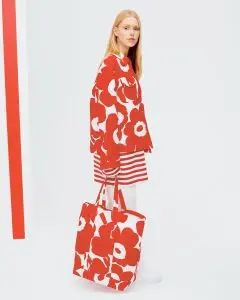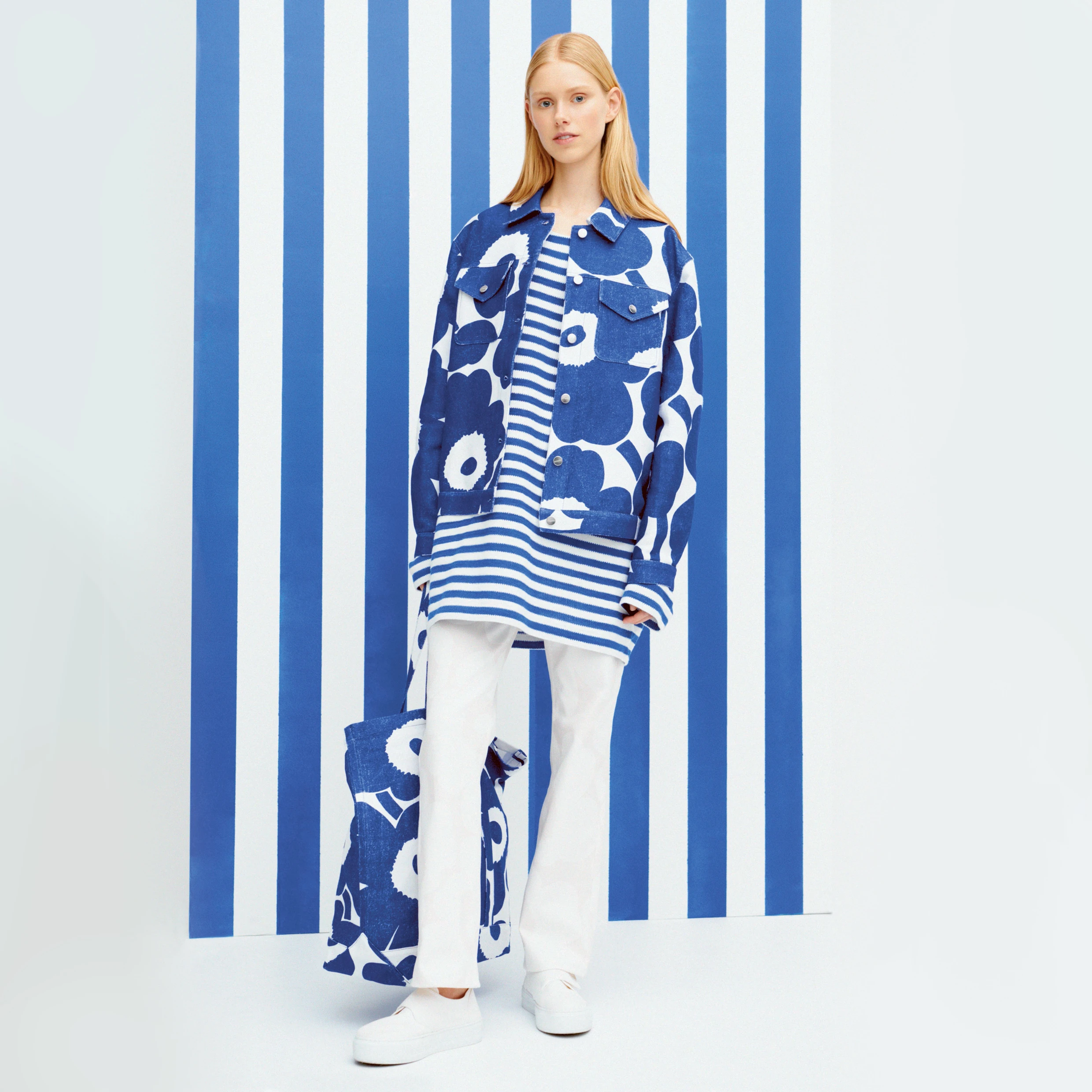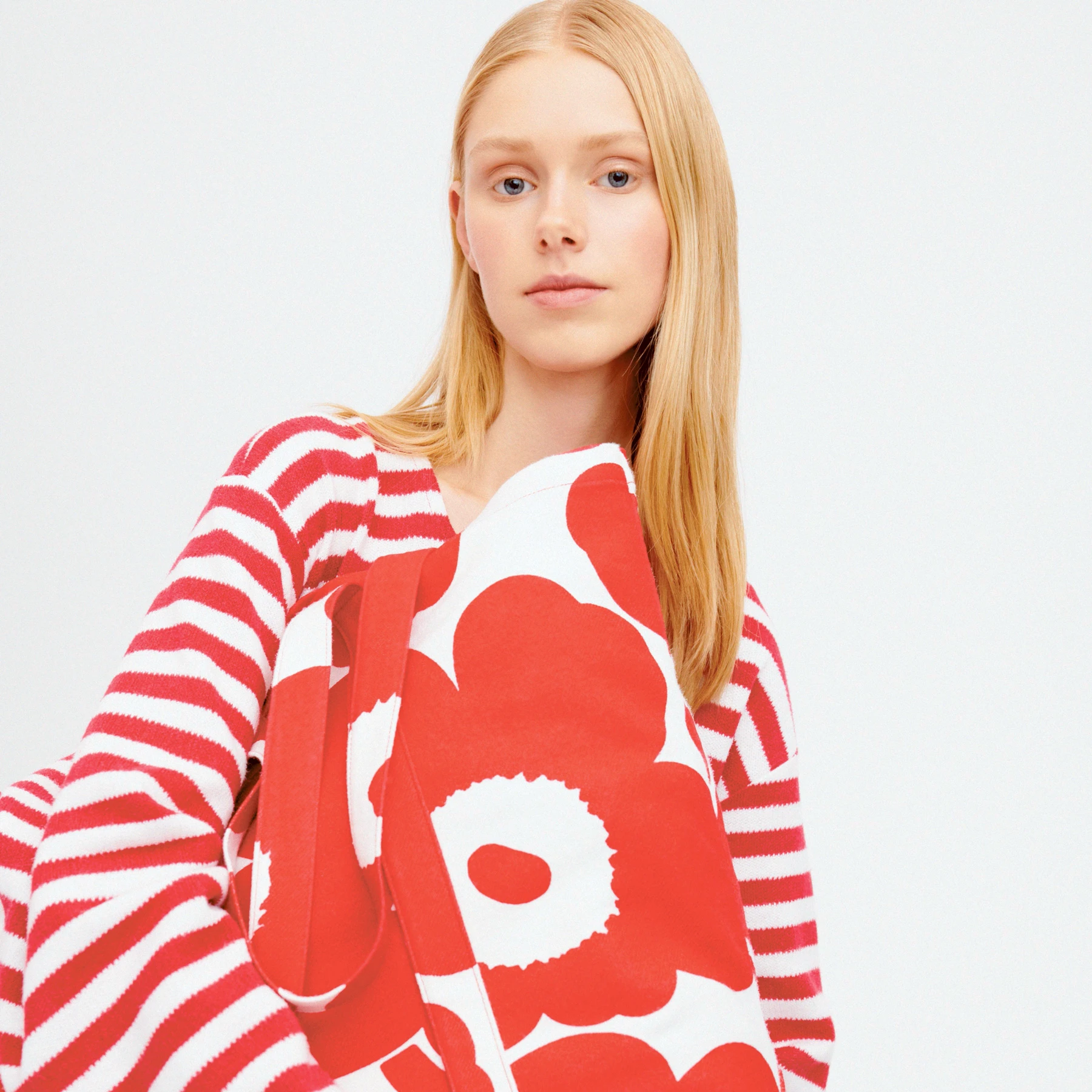Marimekko will soon make its fabric out of wood.
In 2017, the cult Finnish design brand partnered with a fabric innovation startup to start developing wood pulp-based fabric, featuring its iconic, maximalist prints. Now Marimekko is showing off its first prototypes, which inform a broader collection of wood-based products, which the brand hopes to make available to customers as soon as 2022. While the fabrics look and feel like Marimekko’s traditional cotton fabrics, the wood pulp requires 99% less water than cotton production. And at the end of the fabric’s life, it can be entirely recycled or composted. That’s right: You can wear your Marimekko dress for 20 years, then stick it in your compost bin in the garden.
Marimekko’s partnership with the startup, called Spinnova, is part of a larger push among fashion brands to reckon with their devastating impact on the environment. Marimekko debuted in the early 1950s, before fast fashion ravaged the fashion industry, and built its brand on classic looks in long-lasting fabrics. Over the years, it has become an iconic brand known for the way it weaves together fashion, art, and design. Fans of the brand have included the artist Georgia O’Keeffe and the activist Jane Jacobs. And over the past seven decades, Marimekko has stayed true to its approach to durable, functional fashion. The brand creates new prints every year, but it regularly reissues them. This means that if a woman bought a dress a decade ago, there’s a good chance she could wear it into a store and find a similar dress in the same print.
“We create clothes in durable fabrics that are meant to be worn for years, even decades,” says Tiina Alahunta-Kasko, Marimekko’s CEO, who spoke to me from Helsinki. “There’s a large secondhand market for our clothes because they still look good years after the owner first purchased it.”

The simplicity of the process is partly what makes it easy to recycle, Poranen says. When a fabric contains several fibers, or many different chemicals, you have to separate out these different materials before turning it back into new fabric. But pure Spinnova fabric, much like 100% cashmere or cotton, can be more easily returned to its original state. “Our initial tests have found that recycled fabrics are actually stronger than new fabrics,” Poranen says. “The process of breaking down the fibers back to a microscopic level then reforming it seems to strengthen the fibers.” This means recycled Spinnova fabrics will be even more durable and long-lasting.


Recognize your brand's excellence by applying to this year's Brands That Matters Awards before the early-rate deadline, May 3.